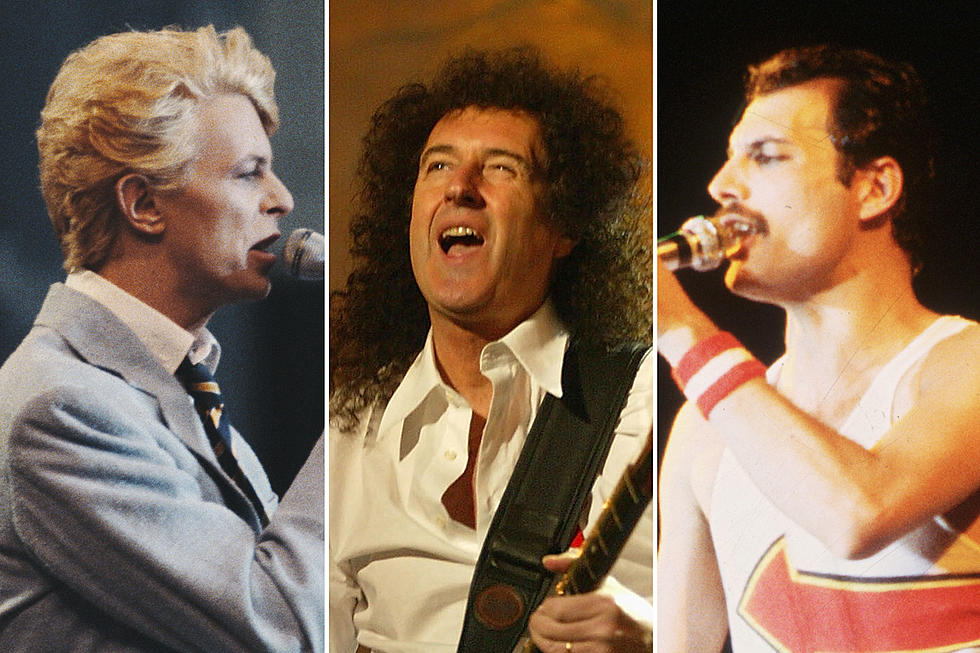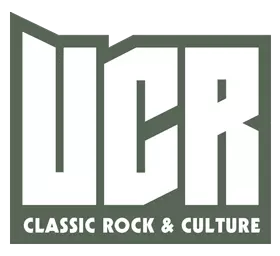
When David Bowie Made an R&B Move With ‘Young Americans’
Even though 1974's Diamond Dogs LP arrived after David Bowie retired his Ziggy Stardust persona, the album still bore some of the hallmarks of that multi-platinum Stardust sound. But for his next effort, 1975's Young Americans, he gave his music a much more drastic overhaul.
The changes started on the Diamond Dogs tour, which found Bowie tinkering relentlessly with his stage design and personnel during a series of dates that stretched from the summer of 1974 through the fall, and morphed from a massive production into a much more basic presentation. The arrangements shifted too, showcasing a much more soulful side of Bowie's music — all of which, as it turned out, signaled a bigger change behind the scenes.
"It went from the East Coast to the West Coast as one band and came back from the West Coast to the East Coast as another band. I was in both of those bands," explained keyboard player Mike Garson during an interview with Indie Ethos. "Most of the people got fired in the Diamond Dogs band, which is the one we did [1974 double live album] David Live with, and then we came back with the Young Americans band, and I was made musical director, and I had Luther Vandross singing with me and David Sanborn playing and six backup singers and two drummers."
While he didn't completely understand the reasons for the overhaul, Garson had an intimate view of the way the new personnel influenced Bowie's next evolution. "I don’t remember what went down, but something changed for him," he continued. "We changed bands in California and came back with a whole different thing, with the sort of soul vibe and the Young Americans vibe."
Partly inspired by the flush of Philly soul acts hitting the charts at the time, Bowie reached out to the crew at the city's Sigma Sound Studios, intending to book a couple of weeks with the house band, MFSB.
After a few scheduling wires were crossed, he ended up only having access to the group's conga player, Larry Washington, which necessitated the hiring of the band Garson described working with — an assortment of New York session players that included guitarist Carlos Alomar, bassist Willie Weeks, drummer Andy Newmark, as well as future stars Sanborn and Vandross.
"I didn’t know who Bowie was," Alomar told the Daily Mail in 2013. "But I did know this was the whitest man I’d ever seen – translucent white. And he had orange hair. He was thin and weighed about 98 pounds. At one point, I said he looked like shit and needed some food. 'You need to let my wife make you some chicken, rice and beans, and fatten you up.' Next thing I know, a limousine rolls up to my house in Queens."
Listen to David Bowie Perform 'Young Americans'
Young Americans would catch some listeners by surprise when it arrived in stores on March 7, 1975, but producer Tony Visconti claimed not to have been caught off guard by the change in direction. "He's been working to put together an R&B sound for years," he insisted. "Every British musician has a hidden desire to be black."
Visconti expanded on that argument in a later conversation with Performing Songwriter, adding: "Most British singers — and most English bands — grew up listening to early American R&B and blues. David was of that same ilk. He adored Little Richard and other R&B artists from the ’50s. He was also addicted to Soul Train. He watched it all the time and actually became the first non-black artist to appear on the show.
"So, it seemed obvious to make an R&B record – and what better place to do that than Sigma Sound in Philadelphia?" Visconti said. "So, yes, that album had its own world and universe. Before then, I don’t think we had worked with any black musicians. That album, to this day, sounds terrifically fresh. It’s one of my favorite Bowie albums."
[Editors note: Gino Vanelli was actually the first white act to be on Soul Train, appearing in February 1975. Bowie wasn't a guest until January 1976, by which time Elton John and the Average White Band had also been on the show.]
Like most rock records at the time, Young Americans came together quickly — so quickly, in fact, that Visconti remembered Bowie scrambling to fill out the running order with material, writing the song "Win" in order to pad out the album and using a Vandross composition, originally titled "Funky Music," as the basis for what ultimately became "Fascination." As Sanborn later told Blender, his impression at the time was one of orchestrated chaos, and he had no idea what to expect from the final product. "Those sessions had been so loose," he admitted, "that I was shocked by how coherent it all seemed when I heard the finished track."
For inspiration, Bowie also turned to Bruce Springsteen, whom he'd been aware of since seeing him open for Bowie's friend Biff Rose in 1973. Although it wouldn't see release until it surfaced with the previously unreleased material on his Sound + Vision box, Bowie attempted to complete a cover of Springsteen's "It's Hard to Be a Saint in the City" for Young Americans — and even got to play it for Springsteen, who stopped by the studio while Bowie was recording.
"He was very shy. I remember sitting in the corridor with him, talking about his lifestyle, which was a very Dylanesque — you know, moving from town to town with a guitar on his back, all that kind of thing," Bowie later wrote. "Anyway, he didn't like what we were doing, I remember that. At least, he didn't express much enthusiasm. I guess he must have thought it was all kind of odd. I was in another universe at the time. I've got this extraordinarily strange photograph of us all — I look like I'm made out of wax."
Listen to David Bowie's Cover of 'Across the Universe'
Springsteen wasn't the only outside musician who drifted into the Young Americans sessions. Toward the end of recording, Bowie met up with John Lennon, sparking a collaboration that ended up producing the No. 1 Americans single "Fame" — much to the lasting chagrin of Visconti, who'd left town to put the finishing touches on the LP.
"A week or so later I was in London mixing the album and I got a call from David. 'Er, Tony. I don't know how to tell you this, but John and I wrote a song together and we recorded and mixed it. It's called 'Fame,'" Visconti recalled years later. "He explained that he went back to the studio and recorded Lennon's 'Across the Universe' for a lark and it turned out good enough to include on Young Americans. He later played the track to Lennon, who thought it was cool, then David asked him it he would like to write and record a new song together. This led to the making of 'Fame.'"
"That period in my life is none too clear, a lot of it is really blurry, but we spent endless hours talking about fame, and what it's like not having a life of your own anymore," Bowie said in a 1983 interview with Musician magazine. "How much you want to be known before you are, and then when you are, how much you want the reverse: 'I don't want to do these interviews! I don't want to have these photographs taken!' We wondered how that slow change takes place, and why it isn't everything it should have been. I guess it was inevitable that the subject matter of the song would be about the subject matter of those conversations."
According to Bowie, the song came together abnormally quickly. "God, that session was fast. That was an evening's work! While John and Carlos Alomar were sketching out the guitar stuff in the studio, I was starting to work out the lyric in the control room. I was so excited about John, and he loved working with my band because they were playing old soul tracks and Stax things. John was so up, had so much energy; it must have been so exciting to always be around him."
Bolstered by "Fame" and the Top 40 success of the title track, Young Americans rose to No. 2 in the U.K. and No. 9 in the states, turning Bowie's self-described "plastic soul" into platinum. Ever restless (and ever more intoxicated by controlled substances), he had already started moving on by the time he delivered his 10th studio LP, Station to Station, the following January — but it remains a beloved bright spot in a discography with more than its share, still warmly regarded by many of the musicians involved in the sessions.
"He was on rare form," Garson told Uncut in 2014. "He was weird then, but the good music always sticks. He would have created that music with or without drugs. It just so happened he was on drugs."
"I think that at the moment of Young Americans, theatrics were not necessary," added Alomar. "I think it was, ‘I’m looking for the soul of Bowie on this record, I don’t need theatrics, I don’t need a mask. I am able to say what I want, say who I am and be who I am.’"
David Bowie Year by Year: 1965-2016 Photographs
More From Ultimate Classic Rock









